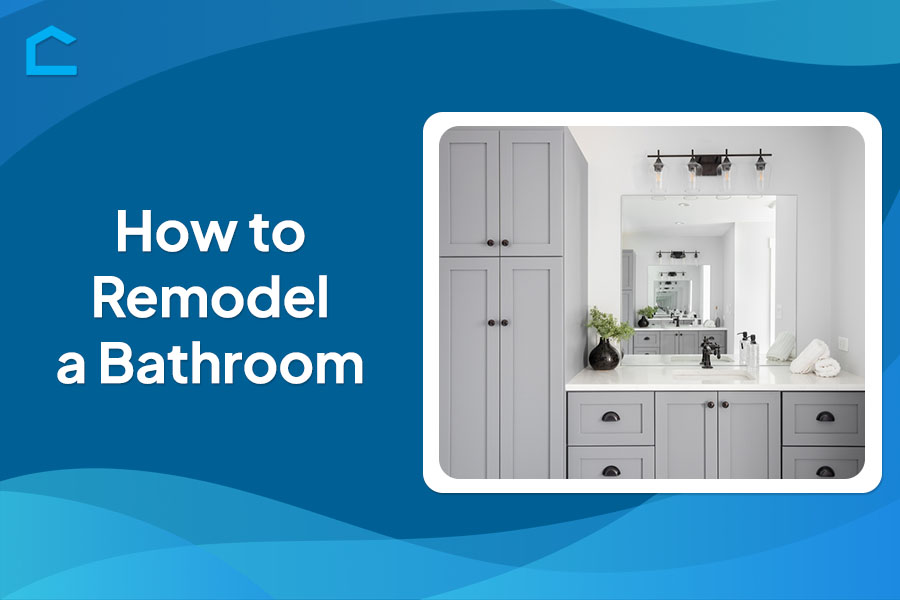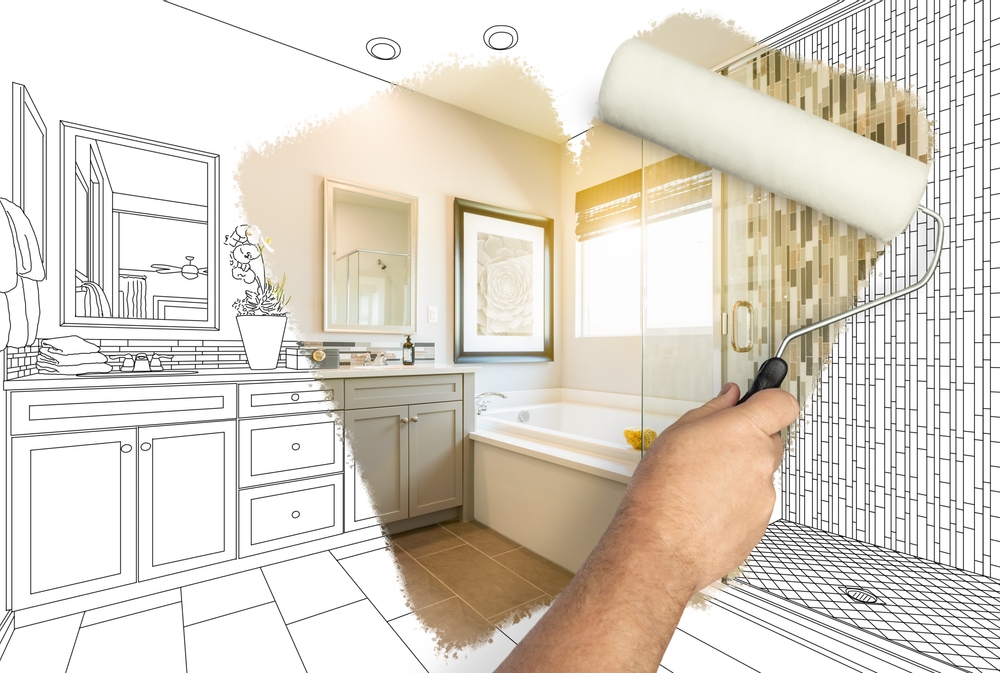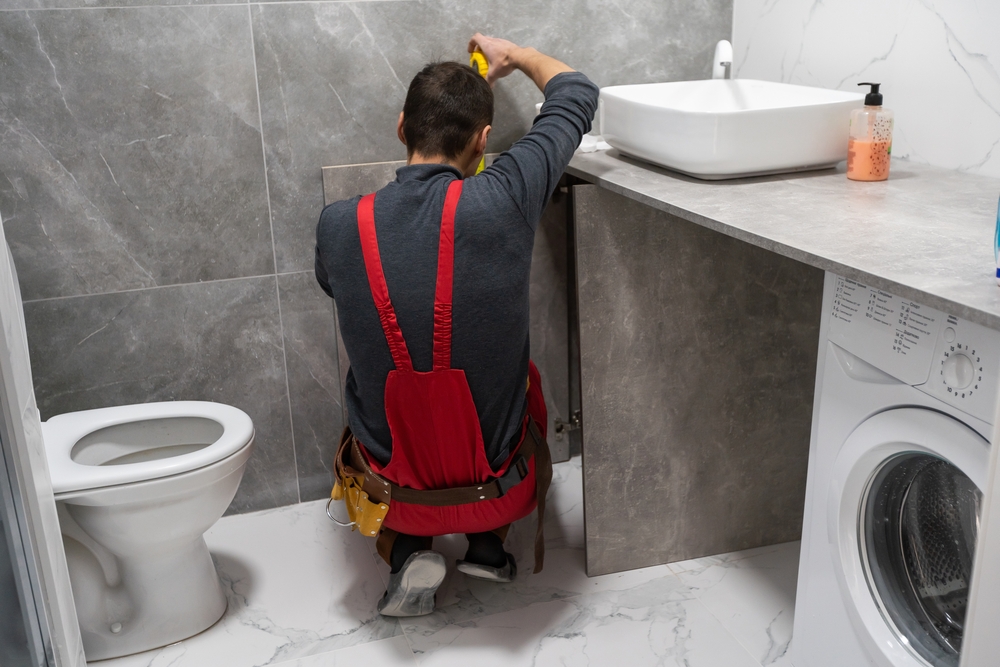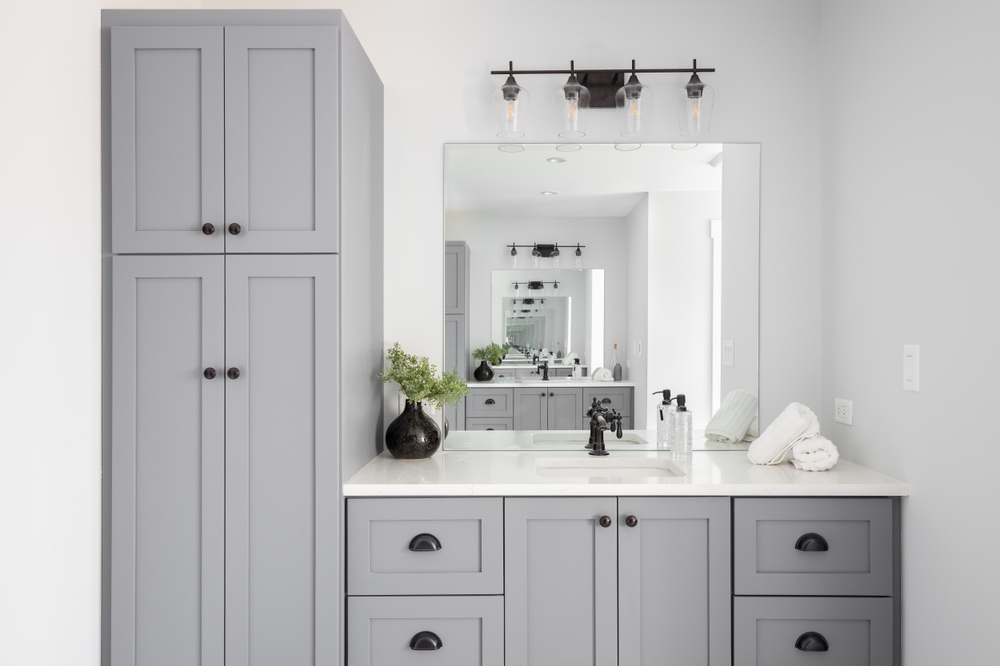How to Remodel a Bathroom

Remodeling your bathroom is a fantastic way to refresh your space and enhance your home’s value, whether you dream of a serene spa retreat or a chic, modern oasis. But do you know what order to renovate bathroom or how to remodel a bathroom actually?
A bathroom remodel involves a series of exciting decisions and creative choices, from choosing the perfect tiles to optimizing layout and design. In this guide, we’ll walk you through every step of the process, offering tips and inspiration to help you transform your outdated bathroom into a stylish and functional haven.
Get ready to dive into the world of tiles, tubs, and transformations as we explore how to start bathroom remodel!

How to Remodel a Bathroom
Remodeling a bathroom can transform your home and improve your daily life. So, here are the steps of the process:
Planning and budgeting
Before starting a bathroom remodel, creating a detailed plan is essential. Begin by identifying the changes you want to make and understanding why.
You can make a list of must-haves and nice-to-haves and consider the needs of everyone who will use the bathroom. A well-thought-out plan will keep you focused and simplify decision-making.
Setting a realistic budget is equally important. Research costs, include a buffer for unexpected expenses, and determine which tasks you can handle versus those requiring professional help.
Finally, define your remodel goals – whether it’s adding more storage or creating a spa-like retreat. Prioritize these goals to guide your decisions and manage trade-offs effectively. Now, let’s see how to design your bathroom.
Design and layout
A great bathroom layout starts with precise measurements and careful planning of movement within the space, including the placement of doors, windows, and plumbing. Based on plumbing needs and usage, arrange fixtures such as the toilet, sink, and shower to ensure privacy and accessibility.
Incorporate ample storage where items are frequently used, such as placing towel storage near the shower and keeping toiletries close to the sink. Prioritize good lighting by using bright lights for tasks and softer lights for relaxation.
Also, make the most of natural light to brighten the space. Adding a nightlight or dimmer switch can be useful for nighttime convenience.
Following these steps and paying attention to each detail, you can design a beautiful and functional bathroom. While a remodel takes time and patience, the result will be well worth the effort.
Choosing Materials and Fixtures
Choosing the right materials and fixtures for your bathroom remodel is crucial for achieving aesthetics and functionality. Begin with moisture-resistant options, by choosing porcelain tiles and natural stone for floors, walls, and countertops, as they are durable and easy to clean. Next, select water-efficient fixtures, such as sinks, toilets, and showers, to help reduce your water bills.
When considering materials, balance durability, style, and budget. Although ceramic and quartz may have a higher initial cost, they offer long-term savings due to their longevity. Additionally, lighter colors can make small spaces feel larger and more open.
Be sure to set a realistic budget that accounts for installation costs. If you have children, prioritize surfaces that are easy to clean to simplify maintenance.
Demolition and Preparation
Remodeling a bathroom starts with meticulous demolition and preparation. Start by clearing out the entire space and removing all personal items, fixtures, and old materials such as tiles and flooring.
However, ensure you turn off the water and electricity before you begin. As you work, exercise caution to avoid damaging hidden pipes or wires.
Once the space is empty, conduct a thorough inspection. Check for signs of water damage, mold, or structural issues. Address any problems you discover at this stage to prevent them from escalating into more significant issues later.

Plumbing and electrical work
After demolition, the next step is to focus on plumbing and electrical work, a crucial phase in your remodel. You may need to relocate pipes for a new layout or update outdated wiring.
We advise you to hire professionals for this task. Professionals are well-versed in building codes and can ensure everything is installed safely and correctly. Plumbers will assist you in planning new pipe routes and installing fixtures, while electricians will ensure proper lighting and safe electrical connections.
Remember that bathrooms have specific requirements for both electrical systems and plumbing. Adhering to codes is not just about passing inspection; it’s essential to ensure that your bathroom is safe and functional.
Installing new fixtures
Once you have the basic systems, you can begin installing new fixtures, including your bathtub or shower, toilet, and sink. Start with the larger items, such as the tub or shower base. Ensure they are level and securely installed before moving to the toilet and sink.
Each fixture must be carefully installed and connected to the plumbing. Take your time with this process to prevent leaks and ensure everything functions properly. If you’re unsure of your abilities, seeking professional assistance can be a wise choice.
Tiling and flooring
Next comes tiling and flooring, a step that can dramatically change the look of your bathroom. Start by preparing the surface; it needs to be clean, dry, and level. For tiles, you might need to install a cement board or backer board first.
When laying the tiles, carefully plan your layout. Start from the center and work outward, using spacers to maintain even gaps.
Once the tiles are set, apply grout to fill the gaps. For other types of flooring, adhere strictly to the manufacturer’s instructions.
Cabinets and storage
Good storage is essential in a bathroom. Install your vanity first, making sure it’s level and securely attached to the wall. Then consider adding other storage solutions like wall cabinets or shelves. Maximize space with solutions like over-toilet storage or built-in shower niches.
Properly utilized storage solutions can significantly enhance your bathroom’s functionality. Choose storage solutions that meet your needs and fit your lifestyle. Well-organized storage not only keeps your bathroom tidy but also enhances its usability.
Painting and finishing touches
Now it’s time for the final touches: painting and adding details. Select a moisture-resistant paint specifically designed for bathrooms. Prepare the walls and apply the paint carefully to ensure the best results. Once the painting is complete, install accessories like towel bars and toilet paper holders.
Next, choose and hang mirrors and light fixtures to complete the look. These finishing touches will bring the entire room together. Add personal decorative elements to make the space feel complete—consider incorporating plants or artwork for a touch of personality.
Don’t forget to choose soft, plush towels to enhance comfort and style. Finally, add scented candles or diffusers to create a relaxing atmosphere, turning your bathroom into a true sanctuary.
Cleaning and inspection
The final step involves a thorough cleaning and inspection. Carefully clean every surface to remove all dust and debris. Next, inspect everything: run water through all fixtures, check for leaks, test electrical outlets and lights, and ensure that cabinets and drawers operate smoothly.
Take your time with this final walkthrough. You can identify and address any minor issues before using your new bathroom. By paying close attention to each detail, you’ll achieve a beautiful and functional space that you’ll enjoy for years.
Additionally, ensure all seals and caulking are properly applied to prevent future water damage. Verify that all hardware is securely fastened and double-check that all ventilation systems work effectively.
How Often Should You Remodel Your Bathroom?
According to professionals in home improvement and renovation, it’s generally advised to remodel your bathroom every 15 to 20 years to keep it looking fresh and functional. If you notice signs such as cracked tiles, peeling paint, mold, leaking faucets, or an outdated design, it may be time to consider a remodel.
However, high-traffic bathrooms or those built with lower-quality materials might require more frequent updates. While small updates, like replacing a sink or retiling, can be done every 5 to 10 years, a full remodel is typically needed less often.
Regular maintenance and promptly addressing minor issues can help prolong your bathroom’s life. A bathroom remodel checklist can streamline the process, ensuring you cover all necessary updates.

Conclusion
Remodeling your bathroom can significantly enhance its functionality and style, transforming it into a refreshed and appealing space. Knowing how to remodel a bathroom, you can turn your outdated one into a modern, efficient sanctuary by carefully planning each step—from budgeting and design to installation and finishing touches.
Whether aiming for a serene spa retreat or a chic modern look, understanding the remodeling process will help you achieve a space that meets your needs and adds value to your home. Regular updates and maintenance can further extend the lifespan of your renovation, ensuring your bathroom remains a highlight of your home for years to come.
